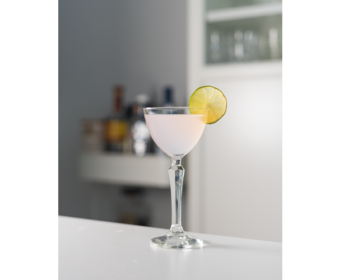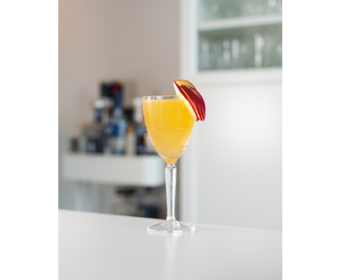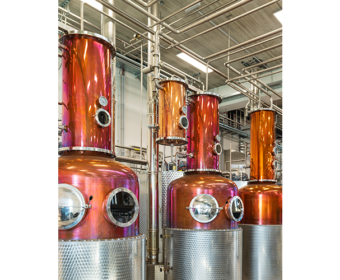Blackberry Stone – Capreolus Distillery
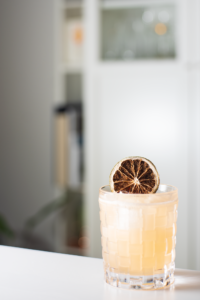
I already featured the Capreolus Siegerrebe Grape Marc Spirit here some time ago. However, master distillery Barney Wilczak has far more to offer in his product line up, namely eau de vies in superior qualities and two extraordinary gins. Well, in this article you will find my opinions to all of his other spirits!

While I would have loved to travelled to Barney’s distillery and visit him in person, unfortunately these difficult times rendered this impossible. However, because Barney is a terrific guy, he sent samples of all of his spirits along with a bottle of his Garden Swift Gin. So, let us start with a closer look at the gin. It took hundreds of distillation runs to come up with the final recipe. This way Barney now has a spirit library of different botanical distilled in different ways. In the end, the finished gin consists of 34 botanicals with a base of British wheat spirit. The complete list of ingredients is kept a secret, but some botanicals are freshly cut zests of Sicilian blood oranges without the white pith, home grown Cascade hops, mullein flowers and leaves of the small leaved lime tree. The botanicals are either macerated for 40 hours or directly suspended in the still. Afterwards, the gin is bottled at the classic gin ABV of 47 %.

Curry and gingerbread
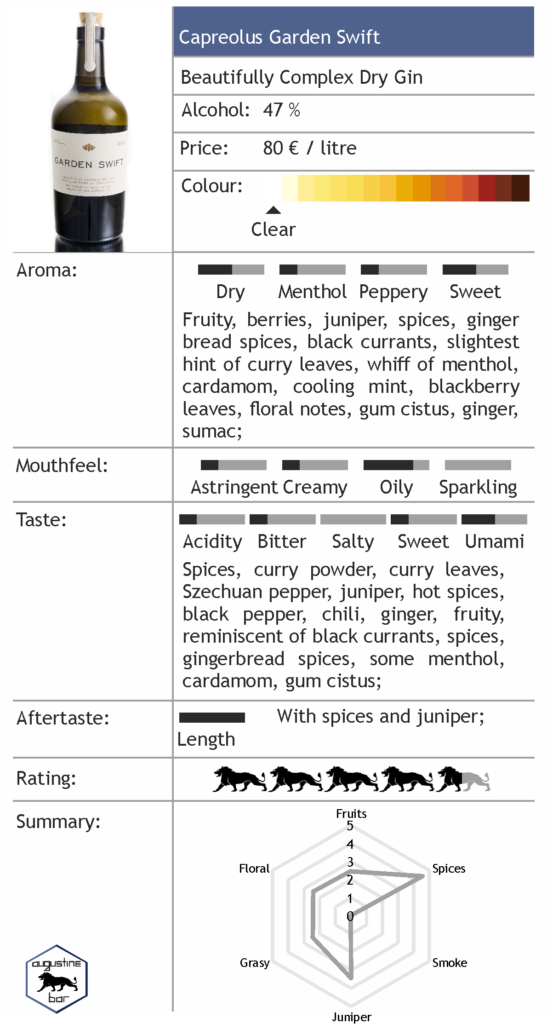
The Garden Swift Gin is everything but your ordinary London Dry Gin: It is charged with curry and gingerbread spices. Of course, you can taste juniper notes, but they do not overwhelm the other botanicals. Apart from that, I found some dark berry notes reminiscent of black currants or blackberries in the taste. All in all I enjoyed the Garden Swift Gin very much, but the blood orange notes could be a bit more pronounced. When it comes to a Gin & Tonic, the Fever Tree Elderflower Tonic works quite well with the Garden Swift Gin. It underlines the floral notes while at the same time diluting the spice notes a bit.

Mulberry enhanced spices
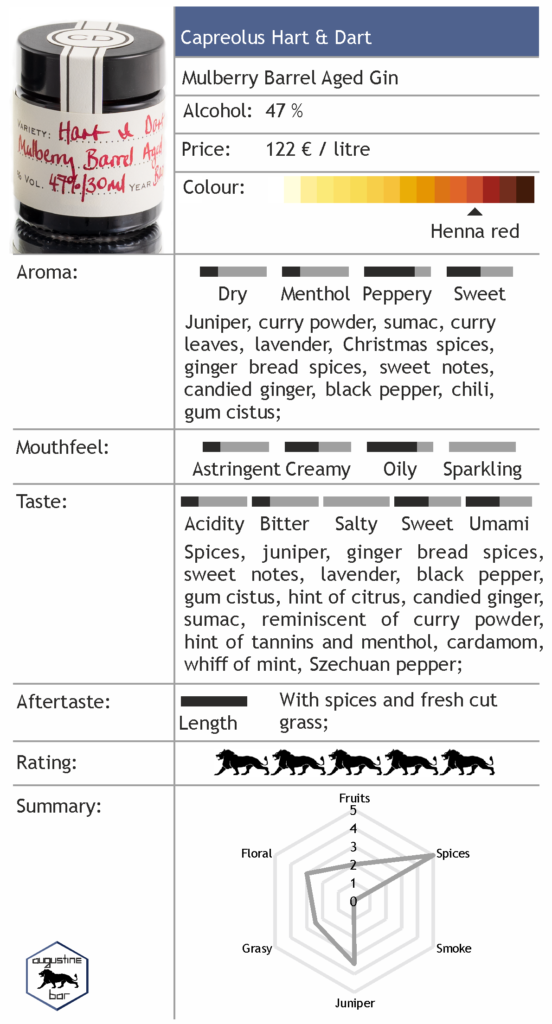
If all the effort with the Garden Swift Gin was not enough, the Hart & Dart takes the same 34 botanicals and combines them with mulberry wood barrel notes. Each batch is released as a single barrel release. In the taste, the mulberry barrel enhances the spice notes in the gin. At the same time, the resulting spirit is smoother than the unaged gin while the berry notes are also subdued. I know that barrel aged gins are a difficult subject amongst gin connoisseurs, but for me the Hart & Dart is even more complex than the Garden Swift Gin.
Delicacy and intricacy
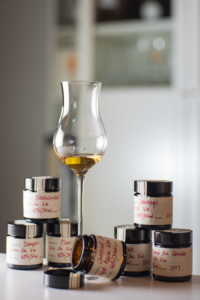
When it comes to eau de vies, Barney follows a specific approach. He wants to create eau de vies which are not lavishly fruity, but instead represent the whole plant with skin, core, stems and the parent plant. Therefore, the fruits are carefully selected and sorted by hand, washed and then crushed rather than sieved. Plums are not pitted and only sieved just before distillation. This creates a balance between almond and fruit notes in the distillate. Usually, the fermentation of the fruits takes between 10 days to twelve weeks. When it is time for distilling, the low wines are extracted on a baine marie 180 l still and most of the time distilled twice. During each distillation run the essences are collected in small bottles, carefully diluted to assess the quality and taste. For the final spirit only the hearts are used and the heads and tails are discarded rather than redistilled.
Complex chestnut barrel notes
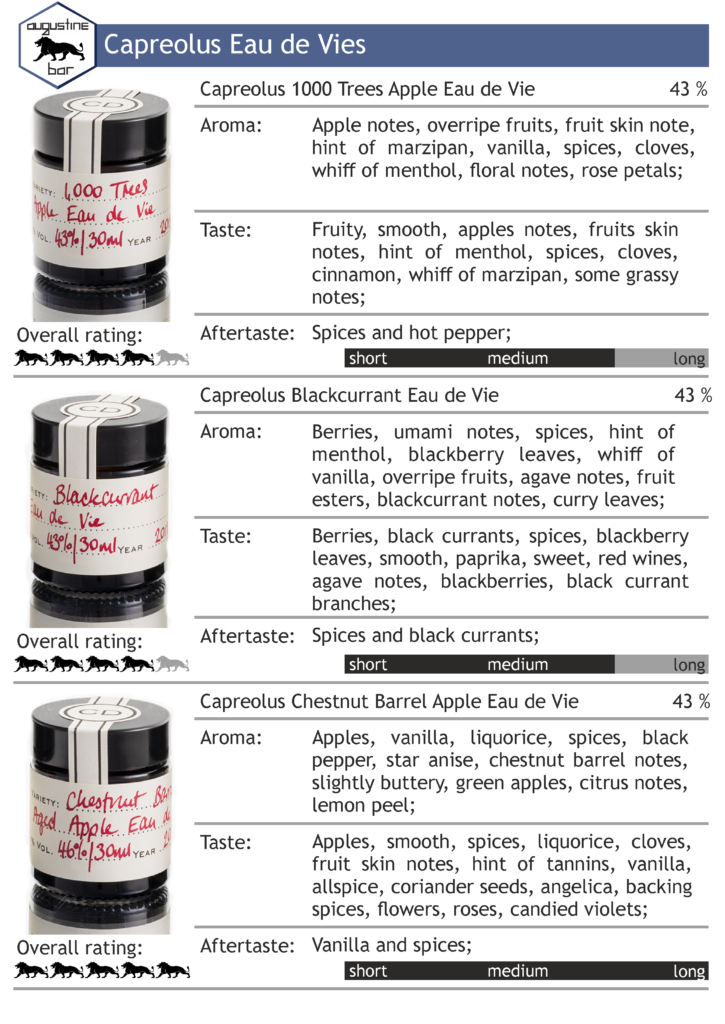
I will present my tasting notes in alphabetical order here and give you some more information on the individual eau de vies. The 1000 Trees Apple Eau de Vie uses apples from an orchard just 11 miles from the distillery. On top of that, each tree represents one apple variety. On top of that, five pounds of each bottle sold go to The Prince’s Countryside Fund. The eau de vie is typical for a refined and well-balanced apple eau de vie. In line with Barney’s philosophy the spirit is not overloaded with mashed apple flavour, but rather delicate. When you take a sip and close your eyes you just can imagine standing in an orchard meadow. The Blackcurrant Eau de Vie from an orchard in Herefordshire goes in the same direction: You will find dark berry notes in the taste, but at the same time you get a lot of black berry leave notes and even hints of lack currant twigs. At least I imagine it to be the twigs, because obviously I never chewed on them. However, it really takes me back to my childhood where I ate black currants directly from the shrub in my parent’s garden. The berries, 22 kg of them for each litre of eau de vie, are hand graded as well as cleaned before the double or sometimes triple distillation. While the both aforementioned eau de vies were very good, the Chestnut Barrel Aged Apple Eau de Vie was the one which really took my breath away. The eau de vie is distilled from Harry Masters Jersey apples a cider apple variety. The crushed apples are fermented as a whole and the spirit is aged in single Chestnut barrels. While the eau de vie certainly has a buttery Chestnut barrel flavour the apple notes are still prominent in the taste. You even get a slight liquorice flavour which I absolutely love. Furthermore, I found notes reminiscent of typical gin botanical notes which show just how complex an eau de vie can be.
Plums and pears

Capreolus has three different plum eau de vies in their repertoire. The first one is a Damson Eau de Vie distilled from plums from the Vale of Evesham. It takes 24 kg of fruits for one litre of eau de vie. The eau de vie has a clear plum note with some fruit ester components. There is just the slightest hint of marzipan in the taste. Next, the Doyenné du Comice pear is said to be the best dessert pear. So, when Barney gets his hands on a bunch of them you can expect a great eau de vie as a result. The pears come from the Bentley Castle Fruit Farm at the best quality for distilling. The fruits are gently crushed and the whole fruits are slowly fermented. Besides a pronounced floral note with hints of roses and lilac, you really can taste the whole fruit in the spirit. Unfortunately, Greengage plums are not very common any more. So, it is great that Capreolus are doing their best to preserve them in liquid form. The plums are grated by hand, washed and gently crushed. The stones are sieved by hand just before distillation. Compared to the Damson Eau de Vie the Greengage eau de vie is more perfumed and reminds me of apricots. In the taste you can even find some citrus notes. While it really is personal preference which of the three plum eau de vies you prefer, I enjoyed the Greengage Eau de Vie the most.
Perfumed fruit notes
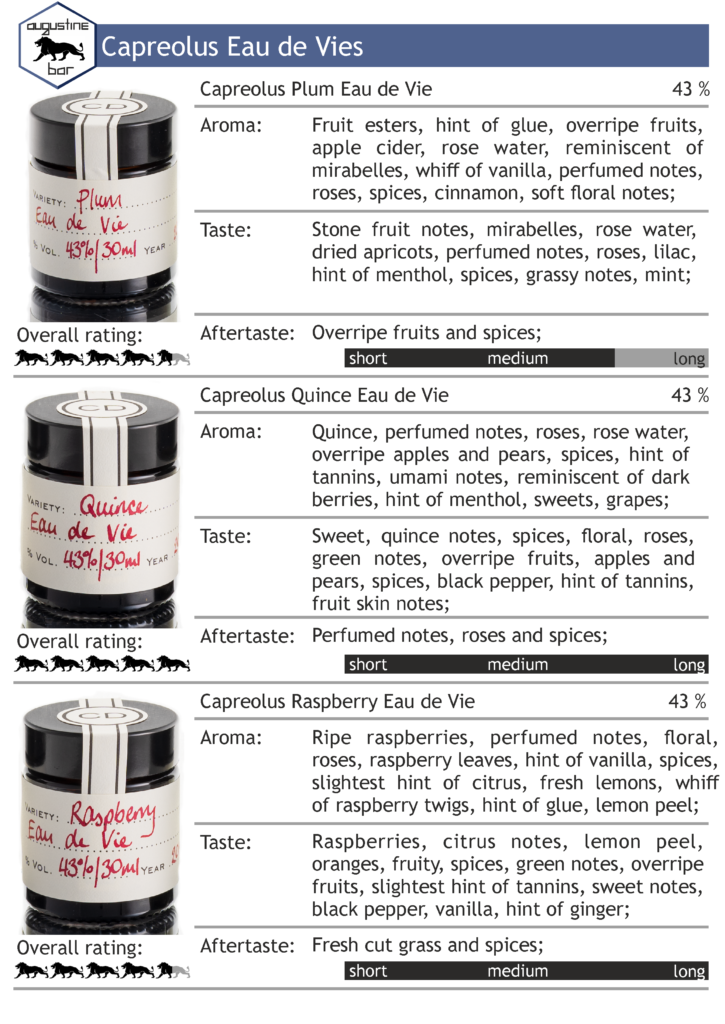
The third Plum Eau de Vie is distilled from mainly Victoria plums with some gages, Reeve’s Seedling and Opal varieties added to the mix. The plums are grown by the Bentley’s in Newent near the Forest of Dean. The plums are crushed without damaging the stones which are again sieved just before distillation. The fermentation is done using the wild yeasts on the plums. Again you will find a lot of plum notes in the eau de vie, but not the overwhelming almost jam-like quality. Instead, there are delicate stone fruit notes and spices, especially cinnamon and vanilla. Of all the fruits out there, quinces are quite hard to distil. In the case of the Capreolus Quince Eau de Vie, the quince are washed by hand to get rid of all the down on the fruits. The fermentation takes one month and is followed by a triple distillation. In the end there are 25 kg of fruits used for one litre eau de vie. Right from the start you are hit by a lot of floral quince notes. These are followed by apple and pear notes accompanied by rose petals. It is very complex and really does not have any of the cooked quince flavours. Last but not least, the Raspberry Eau de Vie takes the whopping number of 33,5 kg of fruits per litre. The berries grow near the Malvern hills and are pre-selected before delivery to the distillery. After grading and cleaning each berry, the fruits are fermented in small vats. The resulting eau de vie has the best bouquet of any raspberry eau de vie I have tried so far! There are a lot of complex raspberry aromas without the green notes which sometimes can be a little off-putting. In the taste the spirit is more delicate with fragile raspberry flavours. All in all, it is a great and refined berry eau de vie with a painstaking attention to detail.
White Sour Negroni

Obviously, I also had to make a drink with the Capreolus spirits. In this case I decided to mix up an Enzoni variation with the Garden Swift Gin. However, instead of Campari I used Ciane a delicate gentian liqueur from France. Also, I replaced the muddled white grapes with high-quality Riesling grape juice. The drink turned out to be very refreshing with a refined Gentian bitterness. Surprisingly the gin gave the whole cocktail a distinct dark berry note somewhere between black currants and black berries, hence the name.

3 cl Ciane Gentian Liqueur
3 cl Lemon Juice
1,5 cl Van Nahmen Riesling Juice
2,25 cl Simple Syrup
Garnish: Dried Lemon Wheel;
Song: Laura Marling – Blackberry Stone;
Just a quick side note, I also tried the Bacchus Grape Marc Spirit, but I forgot to take a picture of the sample bottle. The grapes come from the Three Choirs Vineyard in Newent. The skins of the grapes are wild fermented and carefully distilled. Compared to the Siegerrebe Grape Marc Spirit, the Bacchus is more refined with spices and citrus notes. It even reminds me of a fine Blanc de Noir. If you are looking for a high-quality grappa style spirit, you should check this one out!
*The fact that I received a product reviewed in this article for free, did not – in any way – influence the rating of said product. The eau de vies and gins was provided by Capreolus.

